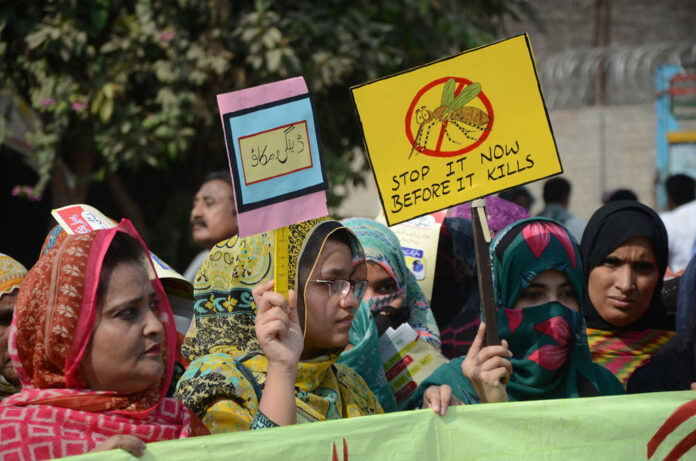ISLAMABAD: Islamabad has been facing a continuous rise in dengue fever cases, leading to pressure on the public and private hospitals amid the Covid-19 pandemic, an official said.
Islamabad District Health Officer Zaeem Zia told media Tuesday was the second consecutive day when the capital reported over 100 dengue fever patients, increasing the overall tally to 1,343 cases this year.
“On Tuesday, at least 113 people contracted the fever and five more succumbed to it in a day,” said the official, adding that over 200 patients are under treatment at different hospitals.
The official said that the capital witnessed a very high tally of 121 dengue fever patients in a day on Monday.
According to the health officer, 896 cases were reported from rural areas while 447 cases were confirmed in urban areas of Islamabad.
The Islamabad administration has launched an anti-dengue campaign in response to the alarmingly high levels of dengue fever cases.
Punjab — which appeared as the most affected province so far — has already sped up multiple actions against it and has also declared an emergency at all hospitals in Lahore.
According to government officials, despite various challenges posed by Covid-19, the government has been making all-out efforts and taking adequate measures to stem the further spread of the dengue virus.
Only nine countries faced severe dengue outbreaks in 1970. But the disease is now seen in more than 100 countries. There are thought to be 390 million infections each year.
In 2011, a major outbreak of dengue fever — potentially lethal disease spread by mosquito bites — infected 20,000 and killed more than 300 people.
Subsequently, in 2019, rising temperatures across Asia and the Americas contributed to multiple severe outbreaks of dengue fever globally, making it the worst year on record for the disease.
Other Asian countries, including Bangladesh, Thailand, Cambodia and Laos, also had outbreaks, with a particularly severe situation in the Philippines, where 1,000 people died of the disease, including hundreds of children, in 2019.























